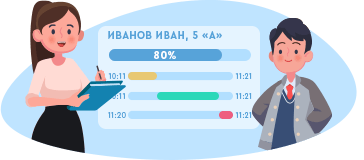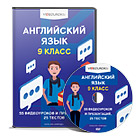Harry is choosing a present for his friend. He can’t make a decision which T-shirt to buy for him, black or brown. Finally, he takes the brown one.
(Ringing…)

Allan: Hi, Harry! Where are you?
Harry: I’m …er…in the shop.
Allan: What are you doing?
Harry: I’m buying something.
Allan: But it’s Friday. We usually go to the cinema on Friday.
Harry: Well, I’m doing my shopping today. What are you doing?
Allan: I’m standing right behind you!
Harry: This is a surprise for you, you know! I’m buying your birthday present!
Allan: Good. I want the black T-shirt, then. I don’t like the brown one!
Look at the highlighted forms and define the tenses they’re used in.
Are doing, am buying, am doing, am standing, am buying. These are Present Continuous tense forms.
Go, want, don’t like are Present Simple tense forms.
As you see, in today’s video we’re going to revise the formation and use of the Present Continuous and Present Simple tenses.
First, let’s check how well you remember their formation.
Complete the tables, please.
OK. We’ll start with the Present Continuous. That’s how your table should look like.
We form the Present Continuous with the auxiliary verb to be (am, is, are) and the main verb with the –ing suffix. Pay attention to their short forms: I’m/He’s/She’s/It’s/We’re/You’re/They’re
To make negatives we need to put NOT after am/is/are.
I am not (I‘m not) buying.
He/she/it is not (isn’t) buying.
You/We/They are not (aren’t) buying.
We form questions by putting am/is/are before the subject.
Am I buying?
Is (he/she/it) buying?
Are (you/we/they) buying?
Pay attention to the Spelling:
• Verbs ending in –e drop the –e and take the –ing suffix.
write – writing see – seeing
• Verbs ending in one stressed vowel between two consonants, double the last consonant and take the –ing suffix.
sit – sitting swim – swimming
• Verbs ending in –ie, drop the –ie and take –y +ing.
lie – lying die – dying
Now let’s have a look at the table with the Present Simple forms.
In positive sentences we add –s or –es to the main verb in the third person singular (he/she/it).
I/You/We/They buy.
He/she/it buys.
In negative sentences and questions, we do NOT add –s or –es to the main verb for he/she/it.
We use do not (don’t) and does not (doesn’t) to make negative sentences.
I/You/We/They do not (don’t) buy.
He/she/it does not (doesn’t) buy.
To make a question, we use Do/Does + subject + infinitive.
Do they buy?
Does she buy?
Pay attention to the Spelling:
Verbs inding in –ch, - sh, -s, -x, add –es : watches, misses, fixes.
Verbs DO and GO also add –es: does, goes.
Verb ending in a consonant + -y, change –y to –ies: fly – flies, carry – carries.
Do you remember what time expressions are used to define the Present Simple and Present Continuous?
Present Simple:
every day, on Sundays, at weekends, always, usually, sometimes, never, once/twice/three times a week.
Present Continuous:
now, right now, at the moment, today, this week/month/year, these days.
Now it’s time to talk about the use of present tenses.
We use the Present Simple:
· for things that happen regularly.
We usually go to the cinema on Friday.
They go to the park after school every day.
· for things that are always or usually true.
My sister works at the bank.
The Earth goes round the sun.

We use the Present Continuous:
· for things that are happening now.
I’m standing right behind you now!
I’m buying your birthday present!

· for temporary situations.
He’s working in London this week.
I’m doing my shopping today.
Pay attention!
We usually use the present simple, not the present continuous, for so-called STATIVE verbs:
believe, forget, hate, have (=have got), hear, know, like, love, need, remember, think, understand, want.
I like pop music. NOT I’m liking pop music.

What do you want? NOT What are you wanting?
Allan: OK, guys, now it’s time to practice the rule.
Read this email and complete the missing forms.
Hi Shelley,
Today is Sunday and I’m at home. My family and I usually go out for a meal on Sunday but not today. The weather is very good so we are having a barbecue in the garden! My friend is here, too. He usually spends Sunday with his family but today he is having lunch with us.
At the moment, he’s in the garden. He is helping Dad with the barbecue. Mum is washing the salad and I am making the lemonade – well, I’m not making it right now because I am writing to you!
What are you doing today?
Love
Allan
Now imagine that it’s Wednesday and you are on holiday with your family. Write an email. Send your emails to videouroki.net. Write about what you usually do on Wednesdays and what you are doing today. Use these ideas to help you:
That’s all for today. Looking forward to your letters!

 Получите свидетельство
Получите свидетельство Вход
Вход





 2717
2717

